THE LAW OF DEMAND
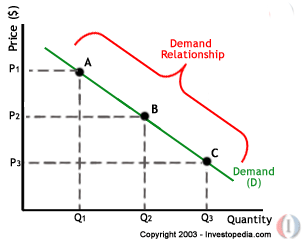 A, B and C are points on the demand curve. Each point on the curve reflects a direct correlation between quantity demanded (Q) and price (P). So, at point A, the quantity demanded will be Q1 and the price will be P1, and so on. The demand relationship curve illustrates the negative relationship between price and quantity demanded. The higher the price of a good the lower the quantity demanded (A), and the lower the price, the more the good will be in demand (C).
A, B and C are points on the demand curve. Each point on the curve reflects a direct correlation between quantity demanded (Q) and price (P). So, at point A, the quantity demanded will be Q1 and the price will be P1, and so on. The demand relationship curve illustrates the negative relationship between price and quantity demanded. The higher the price of a good the lower the quantity demanded (A), and the lower the price, the more the good will be in demand (C).Read more: Law of Supply and Demand: Basic Economics https://www.investopedia.com/university/economics/economics3.asp#ixzz50xuLjTK5
Follow us: Investopedia on Facebook
/
/cow-56a9a71f5f9b58b7d0fdb258.jpg)
Example
Here's a real life example using ground beef. The USDA has calculated that the demand elasticity for beef is -0.621. That means that, as the price rise 1.0 percent, the quantity demanded fall 0.621 percent. This is fairly inelastic because the quantity doesn't fall as much as the price rose.
(Source: "Price Elasticity Estimates," U.S. Department of Agriculture.)
In 2014, the price of ground beef rose dramatically, thanks to two droughts in a row. The first was in 2012, driving up food prices and forcing cattle ranchers to slaughter their cows to prevent them from starving. In 2014, another drought drove grain prices up again. Ranchers hadn't yet rebuilt their herds, so prices for beef simply rose. For more, see Why Are Food Prices So High? (Source: "Average Food and Energy Prices," Bureau of Labor Statistics.)
For this example, let's say a family of four bought 10 pounds of ground beef in January to make hamburgers, meat loaf and chili. All other things being equal, here's the demand schedule showing how they would reduce the quantity bought by 0.621 percent for every 1.0 percent the price actually rose.
Although prices rose 28.4 percent, the quantity bought only fell 14.9 percent because demand is fairly inelastic. These quantities assume all other determinants of demand remain the same.
If the determinants of demand other than price change, it shifts the entire demand curve. That's because a whole new demand schedule will need to be created, to show the new relationship between price and quantity. For more, see Demand Curve Shift.
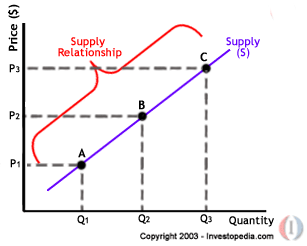
A, B and C are points on the supply curve. Each point on the curve reflects a direct correlation between quantity supplied (Q) and price (P). At point B, the quantity supplied will be Q2 and the price will be P2, and so on. (To learn how economic factors are used in currency trading, read Forex Walkthrough: Economics.)
Read more: Law of Supply and Demand: Basic Economics https://www.investopedia.com/university/economics/economics3.asp#ixzz50xwsjZHl
Follow us: Investopedia on Facebook
Read more: Law of Supply and Demand: Basic Economics https://www.investopedia.com/university/economics/economics3.asp#ixzz50xwsjZHl
Follow us: Investopedia on Facebook
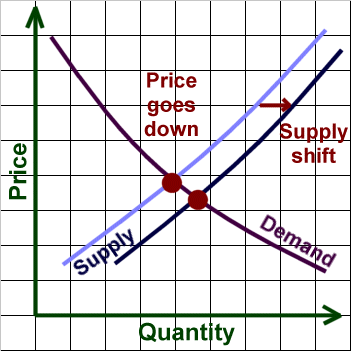
Example #1: The Price of Oranges In this case we will look at how a change in the supply of oranges changes the price The demand for oranges will stay the same. The demand curve doesn't change. In the first year, the weather is perfect for oranges. Orange farmers have a bumper crop. This increases the supply of oranges. Because there are so many more oranges on the market, the farmers reduce the price of oranges in order to sell
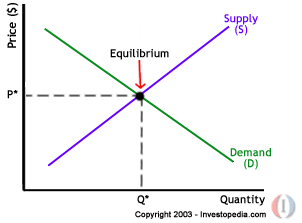
equilibrium occurs at the intersection of the demand and supply curve, which indicates no allocative inefficiency. At this point, the price of the goods will be P* and the quantity will be Q*. These figures are referred to as equilibrium price and quantity.
In the real market place equilibrium can only ever be reached in theory, so the prices of goods and services are constantly changing in relation to fluctuations in demand and supply.
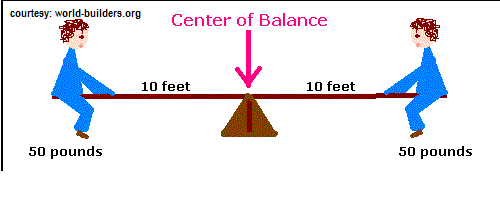
No comments:
Post a Comment